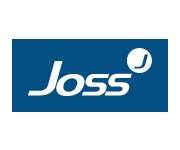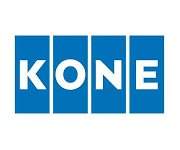Beyond Spreadsheets: Unlocking the Power of Asset Management Software
In today's rapidly evolving business landscape, the effective management of assets is crucial for maintaining competitiveness and achieving sustainable growth. While traditional methods like spreadsheets have long been relied upon for asset tracking, businesses are increasingly turning to specialised asset management software to streamline processes, enhance efficiency, and maximise returns on investment. In this article, we delve into the benefits and features of asset management software, exploring how it goes beyond spreadsheets to unlock the full potential of asset management.
- Enhanced Efficiency and Accuracy:
Asset management software eliminates the manual processes and potential errors associated with spreadsheet-based tracking. By automating data entry, updates, and retrieval, it streamlines workflows and ensures accuracy in asset records. This not only saves time but also minimises the risk of errors that can lead to costly mistakes and compliance issues. - Comprehensive Asset Tracking:
Unlike spreadsheets, which are often limited in scope, asset management software offers comprehensive tracking capabilities. It allows businesses to monitor various types of assets, including equipment, machinery, vehicles, IT hardware, and more, across multiple locations. With features like barcode scanning and RFID tagging, users can easily identify, locate, and manage assets in real-time, facilitating better decision-making and resource allocation. - Centralised Data Management:
One of the key advantages of asset management software is its ability to centralise asset data in a single, accessible repository. This enables stakeholders across departments and locations to access up-to-date information, track asset lifecycles, and analyse usage patterns. By breaking down data silos and promoting collaboration, businesses can optimise asset utilisation, reduce redundancy, and improve overall operational efficiency. - Maintenance Planning and Optimisation:
Asset management software goes beyond simple tracking to support proactive maintenance planning and optimisation. By scheduling routine inspections, maintenance tasks, and repairs based on predefined criteria and usage patterns, businesses can prevent costly downtime, extend asset lifespan, and optimise maintenance costs. Advanced features like predictive maintenance use data analytics and machine learning algorithms to anticipate potential issues and recommend preventive actions, further enhancing asset reliability and performance. - Compliance and Risk Management:
For industries subject to regulatory requirements and standards, compliance and risk management are paramount. Asset management software helps businesses stay compliant by maintaining accurate records, tracking audit trails, and generating compliance reports. By automating compliance workflows and providing real-time visibility into asset status and history, it helps businesses mitigate risks, avoid penalties, and uphold regulatory standards. - Scalability and Customisation:
As businesses grow and evolve, their asset management needs become more complex. Asset management software offers scalability and customisation options to adapt to changing requirements and accommodate expanding asset portfolios. Whether it's adding new asset categories, integrating with existing systems, or customising workflows, businesses can tailor the software to their specific needs, ensuring long-term viability and ROI. - Analytics and Insights:
Data-driven decision-making is essential for driving business success in today's competitive landscape. Asset management software provides powerful analytics and reporting tools that empower businesses to gain insights into asset performance, usage trends, and lifecycle costs. By analysing key metrics and KPIs, businesses can identify opportunities for optimisation, allocate resources more effectively, and make informed strategic decisions.
In conclusion, asset management software represents a significant advancement over traditional spreadsheet-based methods, offering enhanced efficiency, comprehensive tracking capabilities, centralised data management, proactive maintenance planning, compliance and risk management, scalability, and analytics-driven insights. By embracing this technology, businesses can unlock the full potential of their assets, drive operational excellence, and achieve sustainable growth in today's dynamic business environment.














